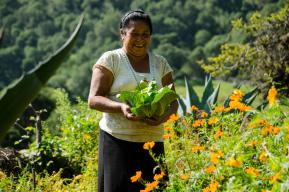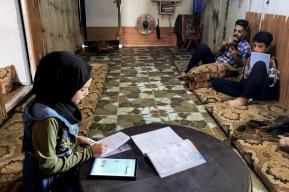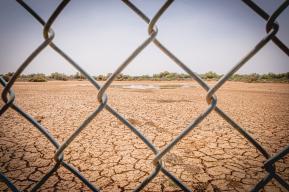I decided to develop MedinaStories because I believe that the key to foster Maghrebi youth resilience to extremist ideologies is to reconnect it to its multicultural roots.
"My engagement for this cause started in 2015. I was among a group of students in the Ecole Nationale d’Architecture of Rabat who decided to run an online fundraising campaign for the population of 9 remote villages of Morocco. We were especially kindled by the unexploited richness of their traditional architecture and their mesmerizing landscapes. We founded the “Hope Builders club” to promote heritage and vernacular architecture and led initiatives in collaboration with local NGOs to catalyze the development of disadvantaged areas through heritage rehabilitation projects. Our most successful project was the creation of a living museum in Ait Benhaddou, a UNESCO World Heritage Site, through the rehabilitation of several houses into tourist spots. Nevertheless, we faced many challenges in the regions, since their heritage sites were under documented and not well promoted.
Through this experience, I realized that access to information is the key to the success of any initiative for heritage. Therefore, I joined the Wikimedia movement in 2018 with the aim to create open online content about the forsaken heritage of the Maghreb region. I was surprised to discover that even World Heritage in the global south, especially in Africa, was still under-documented. Hence, in 2020, I co-founded Wiki World Heritage, a recognized affiliate of Wikimedia foundation dedicated to the creation of free educational content about World Heritage sites worldwide through participatory methods and the use of innovative technologies and open platforms.
Most recently, and with the support of UNESCO and UNOCT, I decided to develop an initiative entitled MedinaStories. I believe that the key to foster Maghrebi youth resilience to extremist ideologies is to reconnect it to its multicultural roots. The Maghreb region has witnessed a drastic rise of pan-Arab and Islamic extremism in the last two decades, especially among youth. However, I believe that if Maghrebi youth understand that their identity is a mix of many religions and many cultures, racism and ideological conflicts will become meaningless to them.
As MedinaStories was built through collaborative activities targeting participants from different cultural backgrounds, the biggest challenge was to pull all these people despite their differences to take part in the project, so the main question during the project design phase was “how to spark the interest of an extremely heterogeneous audience?” The answer to this fundamental question was “talking to emotions.” Emotions are universal and shared by all humans despite their differences. Therefore, MedinaStories was shaped through the approach of emotion design: after identifying the project’s main messages and target audience, it was important to identify which emotions to trigger in order to create an appealing experience. On one hand, the project was designed to spark curiosity and trigger a feeling of achievement through contributing to making a positive change. This was possible through the design of content creation-processes based on competition and games. On the other hand, the project had to preserve familiarity, and this was achieved through using platforms and formats to which young people worldwide are used: Wikipedia, a digital application and social media.
I believe that Heritage, especially cultural, is a potent tool for peacebuilding, through both its intrinsic value and the dynamic interactions and processes that it triggers at different levels. At the local scale, cultural heritage builds community resilience against violence and extremism. It contributes to the emotional and intellectual empowerment of the community by preserving its collective memory, strengthening its roots and fostering pride and a sense of belonging. At the same time, it is a powerful catalyst for socio-economic development, especially through promoting tourism. At a larger scale, cultural heritage is a storyteller that genuinely recounts local cultures and history in a universal language. It fosters inter-cultural acquaintance and interactions, hence contributing to countering stereotypes, as well as hate speech and fear."
- Nassima Chahboun
The MedinaStories initiative focuses on the 10 following World Heritage properties: the Casbah of Algiers, the Medina of Essaouira, the Medina of Fez, the Medina of Kairouan, the Medina of Marrakesh, the Medina of Meknes, the Medina of Rabat, the Medina of Sousse, the Medina of Tetuan and the Medina of Tunis.
Learn more about Nassima’s project here.
Visit the project’s web application here.
Following the success of the Arab World Heritage Young Professionals Forum, and continuing their sense of engagement and purpose beyond the participation in the Forum, five young professionals implemented follow-up projects in the region, making heritage accessible to all, and leveraging it as a channel for peacebuilding in the communities. Through these projects, the participants put to practice the skills acquired during the Forum, particularly through the communication approaches, and took concrete actions towards the recommendations made by them in the Action Plan for the region.










